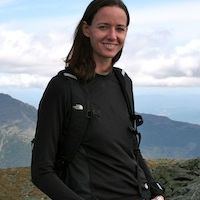Stroud Scientists at Work: Scientists Tour Critical Zone Observatories
15 Sep 2011
News Source: Stroud Water Research Center
Local bow hunters and about 80 water research scientists from Europe, North America, China, and Australia were among the few humans braving the woods of the 565-square-mile Christina River watershed on a damp and chilly morning November 10. The scientists were there to learn about the operations of one of the world's handful of Critical Zone Observatories (CZOs). The hunters, meanwhile, must have wondered what all the fuss was about. They'd most likely seen all the odd looking devices along and in some of the White Clay Creek's myriad of tiny streams, which rise in Pennsylvania and flow into Delaware and the Christina River. Chris McLaughlin, a Ph.D. candidate in the Center's biogeochemistry group, explains how the Center's long-term datasets are being used in the CZO project. But if the hunters had joined the tour they would have discovered from the scientists and young graduate students who were manning the various stations that the instruments are monitoring the "critical zone." The complex natural processes that happen in this zone — from the bottom of the aquifers to the tree tops — are responsible for sustaining life on Earth. And the scientists are seeking to understand them through the CZOs. more >>
News Source:
READ MORE from Stroud Water Research Center >>
News Category:
RESEARCH |
INFRASTRUCTURE |
PEOPLE
Explore Further





